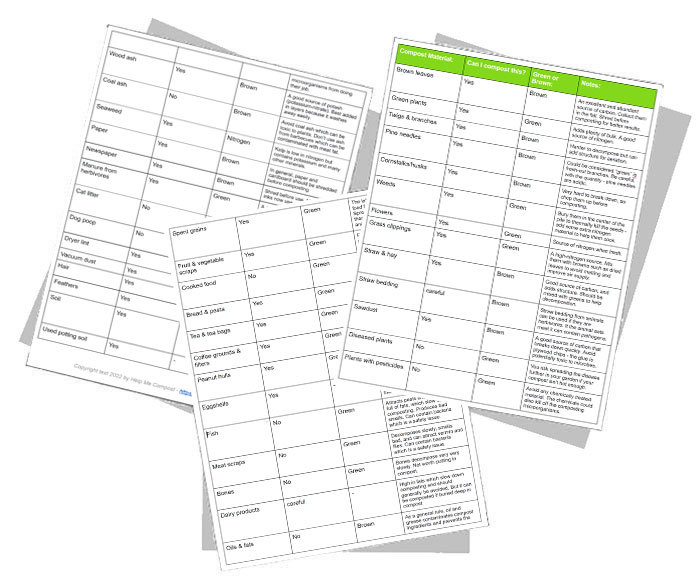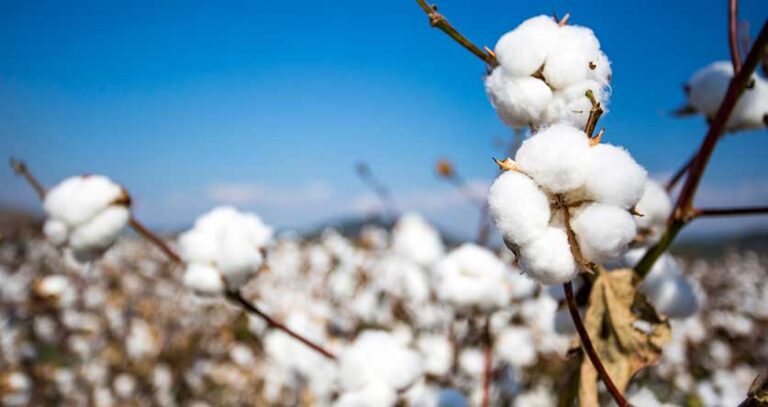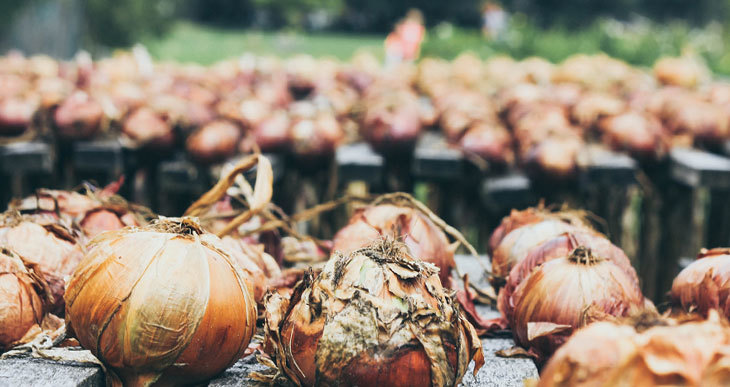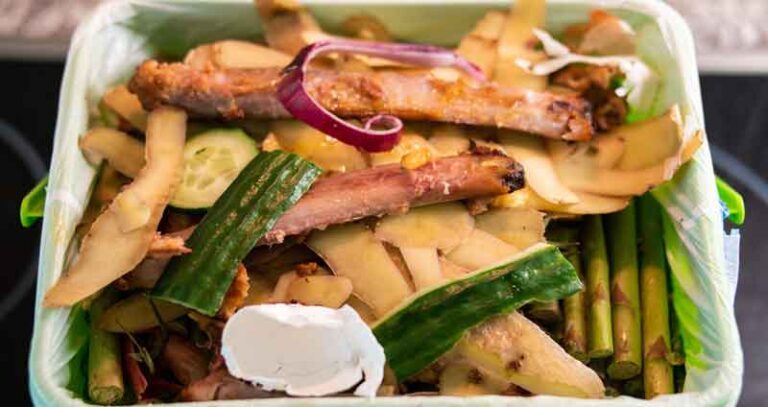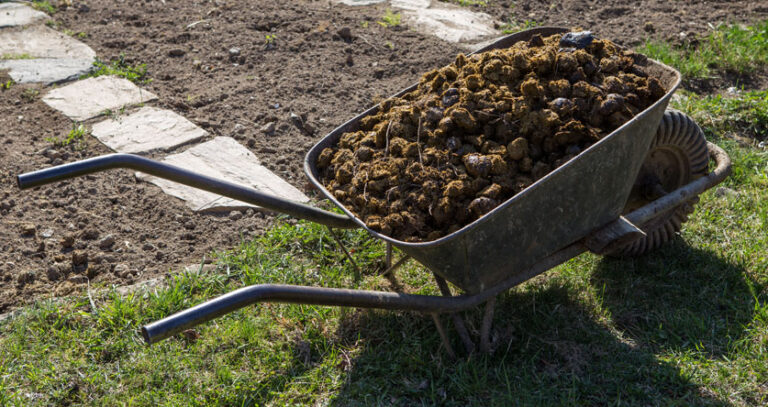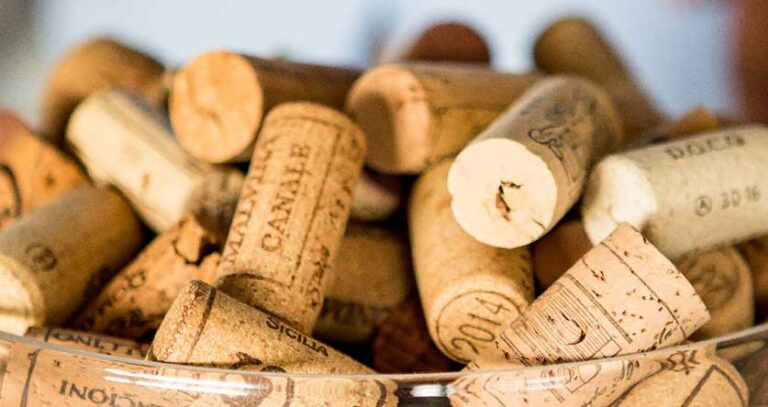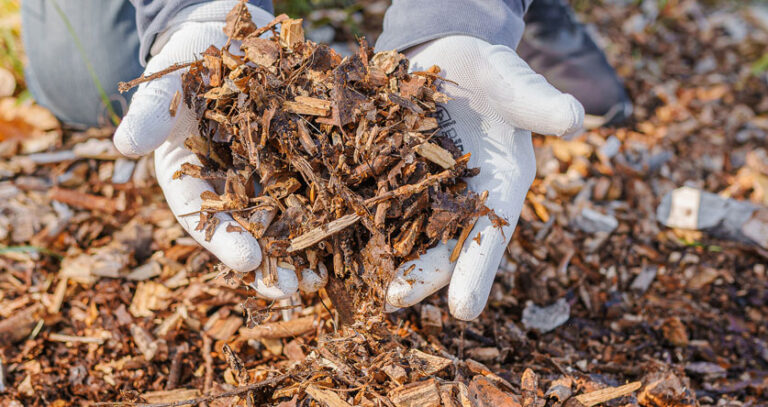Compost Materials Chart (List of Ingredients)

Knowing what materials to put into compost can be a headache at times.
When I started composting, I remember trying to figure out the perfect ingredients for my compost heap and whether certain materials would do good or bad!
And it can be frustrating trying to find that information.
So in an effort to provide a helpful list of common ingredients you can compost (and a few of those you probably shouldn’t), in the table below, you’ll find a handy compost reference chart to quickly look up the things you can use.
And you’ll also find a printable version that you can download for future use.
Compost Materials Chart
In this chart, you’ll find an exhaustive list of what materials can be composted. But composting isn’t only about what you put in.
It’s also what you leave out, how much you use, and how you combine them together.
As a quick reminder, here is a checklist of what’s needed for good decomposition in your composter:
What are the basic materials for composting?
There are four essential ingredients in composting:
- Nitrogen (Green organic matter)
- Carbon (Brown materials)
- Water
- Oxygen
Each of these elements is needed for the rotting process to function correctly. They should also be supplied in the correct proportions.
So keep in mind, successful compost is a bit of a balancing act.
For a more in-depth explanation of how to get going, read this article about How to use a compost bin. Remember, the wider the variety of ingredients used, the richer the compost and the greater benefit for your plants.
Types of material used in compost
The checklist below classifies materials into two types:
- Green
- Brown
Green materials are those that are high in nitrogen and tend to be wetter types of ingredients.
Brown matter is high in carbon and generally has a dry appearance.
These two types of compost materials obviously affect the moisture content, which is part of the balancing act of composting. However, oxygen supply is mostly a matter of airflow and proper aeration techniques.
Note: some communities place restrictions on composting food waste outdoors. Check with your local authority.
Note: If viewing on phone, please swipe the table to scroll horizontally.
Compost Material: | Can I compost this? | Green or Brown: | Notes: |
|---|---|---|---|
Brown leaves | Yes | Brown | An excellent and abundant source of carbon. Collect them in the fall. Shred before composting for better results. |
Green plants | Yes | Green | Adds plenty of bulk. A good source of nitrogen. |
Twigs & branches | Yes | Brown | Harder to decompose but can add structure for aeration. |
Pine needles | Yes | Brown | Could be considered “green” is fresh-cut branches. Be careful, with the quantity – pine needles are acidic. |
Cornstalks/husks | Yes | Brown | Very hard to break down, so chop them up before composting. |
Weeds | Yes | Green | Bury them in the center of the pile to thermally kill the seeds – add some extra nitrogen material to help them cook. |
Flowers | Yes | Green | Source of nitrogen when fresh. |
Grass clippings | Yes | Green | A high-nitrogen source. Mix them with browns such as dried leaves to avoid matting and improve air supply. |
Straw & hay | Yes | Brown | Good source of carbon, and adds structure. Should be mixed with greens to help decomposition. |
Straw bedding | careful | Brown | Straw bedding from animals can be used if they are herbivores. If the animal eats meat it can contain pathogens. |
Sawdust | Yes | Brown | A good source of carbon that breaks down quickly. Avoid plywood chips – the glue is potentially toxic to microbes. |
Diseased plants | No | Green | You risk spreading the disease further in your garden if your compost isn’t hot enough. |
Plants with pesticides | No | Green | Avoid any chemically treated material. The chemicals could also kill off the composting microorganisms. |
Spent grains / beer hops | Yes | Green | The leftover sugars are great food for composting microbes. Spread them thinly and mix them with browns to avoid anaerobic conditions. |
Fruit & vegetable scraps | Yes | Green | Fruit and vegetables are a good source of nitrogen and moisture. |
Cooked food | No | Green | Avoid cooked food waste which is cooked with fats. This is slow to decompose and can attract pests. |
Bread & pasta | Yes | Green | Includes cookies, rice, etc. Bury these things in your compost to avoid attracting pests. |
Tea & tea bags | Yes | Green | The metal staples on bags are too small to be worried about. Leave them in. |
Coffee grounds & filters | Yes | Green | An excellent source of nitrogen. Can also discourage pests thanks to the odor. |
Peanut hulls | Yes | Green | Contributes nitrogen and breaks down quite quickly. Other nut shells are long to decompose. |
Eggshells | Yes | – | Contains about 95% calcium, which could be a useful amendment for plants. Grind them up before composting. |
Fish | No | Green | Attracts pests and is generally full of fats, which slow down composting. Produces bad smells. Can contain bacteria which is a safety issue. |
Meat scraps | No | Green | Decomposes slowly, smells bad, and can attract vermin and flies. Can contain bacteria which is a safety issue. |
Bones | No | Green | Bones decompose very very slowly. Not worth putting in compost. |
Dairy products | careful | – | High in fats which slow down composting and should generally be avoided. But it can be composted if buried deep in compost |
Oils & fats | No | Brown | As a general rule, oil and grease contaminates compost ingredients and prevents the microorganisms from doing their job. |
Wood ash | Yes | Brown | A good source of potash (potassium-nitrate). Best added in layers because it washes away easily. |
Coal ash | No | Brown | Avoid coal ash which can be toxic to plants. Don’t use ash from barbecues which can be contaminated with meat fat. |
Seaweed | Yes | Green | Kelp is low in nitrogen but contains potassium and many other minerals. |
Paper | Yes | Brown | In general, paper and cardboard should be shredded before composting. |
Newspaper | Yes | Brown | Shred before use. Most printing inks now use vegetable dyes. |
Manure from herbivores | Yes | Green | A good source of nitrogen. Often mixed with bedding like straw or wood shavings, which also adds carbon. |
Cat litter | No | Green | Not considered safe because manures from meat-eating animals can contain harmful bacteria or parasites. |
Dog poop | No | Green | Avoid manures from meat-eating animals because of safety concerns. |
Dryer lint | Yes | Brown | The carbon content can help add structure. |
Vacuum dust | Yes | – | No reason not to use it. |
Hair | Yes | Green | Human and animal hair can be composted. |
Feathers | Yes | Green | Feathers contain a lot of nitrogen. |
Soil | Yes | – | Soil is good to add to compost when you have a large amount of fresh material. It contributes useful microbes & helps inoculate the pile. |
Used potting soil | Yes | – | Even if slightly depleted it contributes useful humus. |
Printable Compost Materials Chart
You can download a printable PDF version of this compost chart here…
